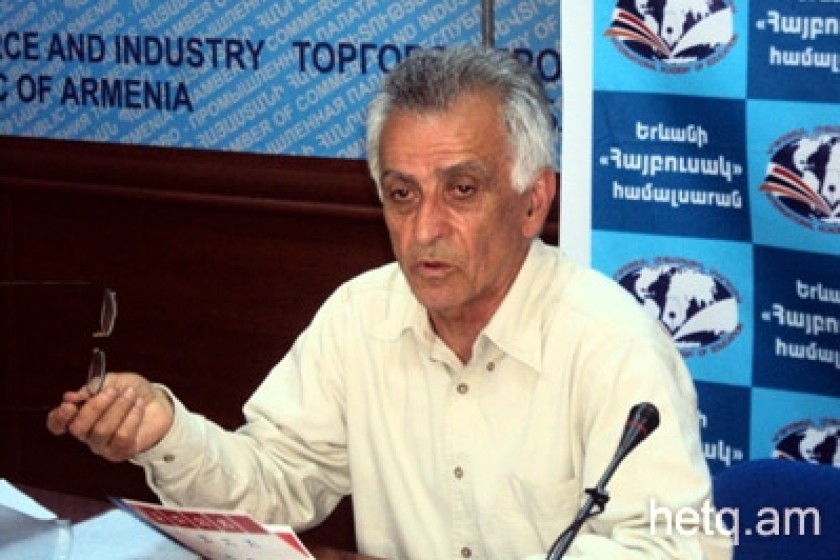
Greens' Union Prez: No Justification for Drawing More Lake Sevan Water
The RA National Assembly passed a government bill allowing for 320 million cubic meters of Lake Sevan water to be drawn down for agriculture irrigation purposes.
Prior to this bill, passed after the first hearing, the maximum allowed was 170 million cubic meters. I spoke to Hakob Sanasaryan, head of the Greens’ Union, to get his take on the matter.
Mr. Sanasaryan, how does the government justify drawing off 320 million cubic meters of Lake Sevan water?
They cannot justify taking an additional 150 million cubic meters of water. It’s totally arbitrary. Even the 170 million maximum needs to be reviewed. There have been years when we have drawn 60, 80 and even 90 million cubic meters.
The government claims that the Azat and Aparan reservoirs are half full and that the Ranchpar, Mkhchyan and Arevshat pumping stations can only pump 44 million cubic meters. But last year, these stations pumped 95 million cubic meters.
Drawing off Lake Sevan water is conditioned on climatic factors. Luckily, climatic conditions this year have been good. There was greater than average snowfall this winter and spring wasn’t that dry. There was good rainfall. There can be a drought or not. Nevertheless, the government started to draw water as of May 2. Usually this is done at the end of June when the rivers start to dry up. 95 million cubic meters of water has already been drawn this year.
Has such an amount been drawn previously?
Yes, in 2008. Based on false substantiations, the government drew 302 million cubic meters.
What’s the reason for such an approach?
I think that some of the main reasons are that the World Bank doesn’t regard a rapid rise of the Sevan water level as convenient and then, influential people in Armenia have buildings and other structures on the lake banks.
Can you back up this statement?
In 1996-1998, the World Bank funded a project designed to restore the ecological balance of Lake Sevan. This project served as the basis for the Lake Sevan Law and the presidential committee that was set up.
In the project evaluation it states that the level of the lake can rise to a point of 1903.5 in a period of 40-47 years and that a more rapid rise would have negative consequences for Armenia’s economy. There would be a loss of agricultural land and other such arguments.
The project also concluded that diverting some of the Vorotan River water to Sevan was also incorrect, even if the tunnel cost nothing to build or operate.
Why do you think that an institution like the Wold Bank would pursue such a policy?
I think that creditor institutions would rather not see Armenia having sustainable resources.
From 1991-1995, one of the main guarantors of Armenia’s survival was Sevan – its fish, the hydro-electric energy produced and irrigation water. If these resources hadn’t existed, Armenia would have applied for more loans and credits.
How would you evaluate the work of the Presidential Committee on Sevan?
Well, it was in the context of the Committee that laws were enacted allowing for a 20-21 centimetre annual rise of the lake’s surface. If the level had already risen, then another 12-13 centimetres was allowed for.
 Videos
Videos Photos
Photos
Write a comment